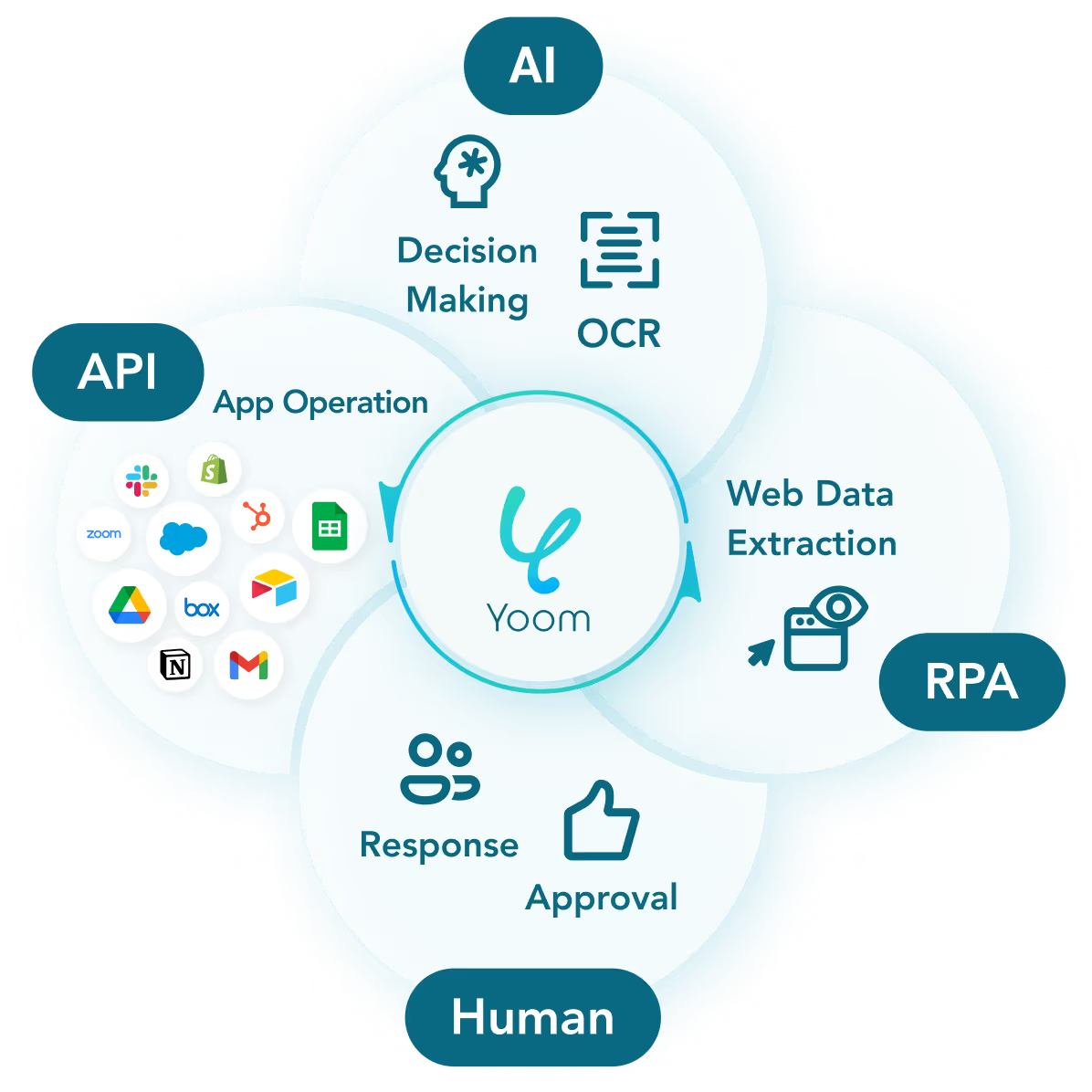
Start free
Functions
Try for free
■Overview
In this workflow, when new data is added to Yoom's database, Gemini can automatically summarize it and add the summary results to Notion. This allows for efficient organization and sharing of large amounts of data, contributing to improved productivity. With Yoom, you can easily connect apps without the need for programming.
■Recommended for
■Benefits of using this template



 When a page is created or updated
When a page is created or updated
 When a database is created or updated
When a database is created or updated
 [Deprecated] When a page in a specific database is created or updated
[Deprecated] When a page in a specific database is created or updated
 When receiving a Webhook
When receiving a Webhook
 When a page is created (Webhook)
When a page is created (Webhook)
 When page content is updated (Webhook)
When page content is updated (Webhook)
 When a page is deleted (Webhook)
When a page is deleted (Webhook)
 When Page Properties are Updated (Webhook)
When Page Properties are Updated (Webhook)
 When a Comment is Created (Webhook)
When a Comment is Created (Webhook)
 When a Comment is Updated (Webhook)
When a Comment is Updated (Webhook)
 When a Comment is Deleted (Webhook)
When a Comment is Deleted (Webhook)
 When Database Content is Added or Updated (Webhook)
When Database Content is Added or Updated (Webhook)
 When a page in a specific data source is created or updated
When a page in a specific data source is created or updated
 Generate Content
Generate Content
 Upload File
Upload File
 Generate Content (Use File)
Generate Content (Use File)
 Generate Content (URL Context)
Generate Content (URL Context)
 Generate Content (Google Search)
Generate Content (Google Search)
 Get page details
Get page details
 Create Page
Create Page
 Append text to page
Append text to page
 Update Page Property (Text)
Update Page Property (Text)
 Update Page Property (Number)
Update Page Property (Number)
 Update Page Property (Select)
Update Page Property (Select)
 Update Page Property (Multi-select)
Update Page Property (Multi-select)
 Update Page Property (Date)
Update Page Property (Date)
 Update page property (Checkbox)
Update page property (Checkbox)
 Update page property (URL)
Update page property (URL)
 Update page property (Email)
Update page property (Email)
 Update page property (Phone number)
Update page property (Phone number)
 Retrieve block information for a specific page
Retrieve block information for a specific page
 Generate Content
Generate Content Upload File
Upload File Generate Content (Use File)
Generate Content (Use File) Generate Content (URL Context)
Generate Content (URL Context) Generate Content (Google Search)
Generate Content (Google Search) When a page is created or updated
When a page is created or updated When a database is created or updated
When a database is created or updated [Deprecated] When a page in a specific database is created or updated
[Deprecated] When a page in a specific database is created or updated When receiving a Webhook
When receiving a Webhook When a page is created (Webhook)
When a page is created (Webhook) When page content is updated (Webhook)
When page content is updated (Webhook) When a page is deleted (Webhook)
When a page is deleted (Webhook) When Page Properties are Updated (Webhook)
When Page Properties are Updated (Webhook) When a Comment is Created (Webhook)
When a Comment is Created (Webhook) When a Comment is Updated (Webhook)
When a Comment is Updated (Webhook) When a Comment is Deleted (Webhook)
When a Comment is Deleted (Webhook) When Database Content is Added or Updated (Webhook)
When Database Content is Added or Updated (Webhook) When a page in a specific data source is created or updated
When a page in a specific data source is created or updated Get page details
Get page details Create Page
Create Page Append text to page
Append text to page Update Page Property (Text)
Update Page Property (Text) Update Page Property (Number)
Update Page Property (Number) Update Page Property (Select)
Update Page Property (Select) Update Page Property (Multi-select)
Update Page Property (Multi-select) Update Page Property (Date)
Update Page Property (Date) Update page property (Checkbox)
Update page property (Checkbox) Update page property (URL)
Update page property (URL) Update page property (Email)
Update page property (Email) Update page property (Phone number)
Update page property (Phone number) Retrieve block information for a specific page
Retrieve block information for a specific page List users
List users Update page properties (Relation property)
Update page properties (Relation property) Add a sub-item to the specified record
Add a sub-item to the specified record Generate File Upload ID
Generate File Upload ID Upload file
Upload file Update Page Property (Files & media property)
Update Page Property (Files & media property) Download File
Download File Retrieve Page Information (List of File Info)
Retrieve Page Information (List of File Info) Search Pages and Databases by Title
Search Pages and Databases by Title Create Page from Database Template (Title Only)
Create Page from Database Template (Title Only) Add a Heading and Paragraph to a Page
Add a Heading and Paragraph to a Page Update Data Source Property Name
Update Data Source Property Name Update Page Property (Title)
Update Page Property (Title) Search text within a data source’s formula property
Search text within a data source’s formula property Append Text with Embedded URL to Page
Append Text with Embedded URL to Page